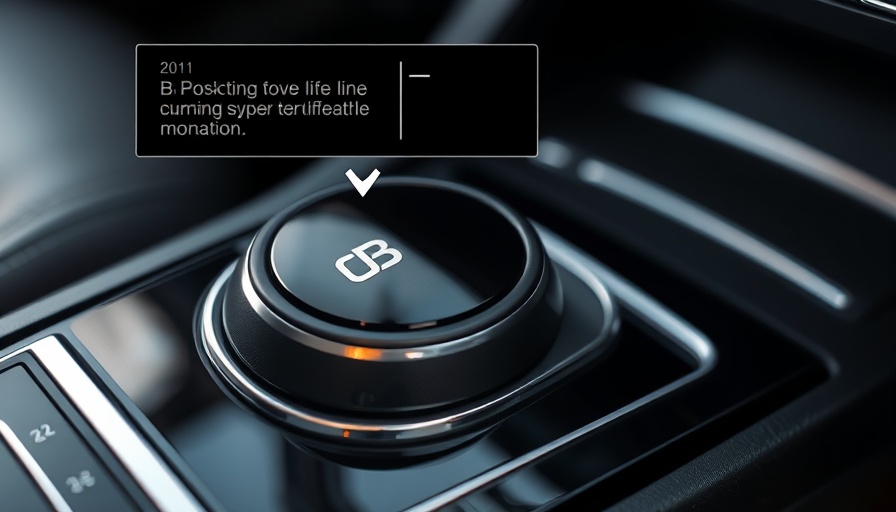
Unraveling the Mystery of the 'B' on Your Gear Shift
If you've ever glanced at your car's gear shift and spotted a mysterious 'B', you're not alone. Many drivers overlook this setting, assuming it’s just another letter among other well-known indicators like P for Park, R for Reverse, N for Neutral, and D for Drive. Understanding what the 'B' signifies can leave you better equipped to handle unique driving situations, particularly if you own a hybrid vehicle.
What Every Driver Should Know About Gear Shift Symbols
Most cars provide similar functions on their gear shifts, leading to a common misconception that they all operate identically. However, variations exist that make a significant difference in driver experience. For instance, while you're likely already familiar with standard settings, hybrid models often include 'B', which signifies Engine Braking Mode. This setting is designed not only for safety but also for efficiency.
The Purpose of 'B': Understanding Brake or Engine Braking Mode
The 'B' in many hybrid vehicles, such as those produced by Toyota and Honda, stands for “Brake or Engine Braking mode.” This mode isn't found in traditional gas-powered vehicles and serves a unique role. When engaged, it enhances regenerative braking to slow the car while simultaneously recharging the hybrid battery. This critical feature promotes energy conservation and balances braking demands, thereby reducing wear on conventional brake pads.
Maximizing Your Vehicle’s Efficiency with B Mode
Using 'B' offers distinct advantages, especially in specific scenarios. As per Honda’s guidance, it's particularly useful during stop-and-go traffic or when descending hills. In these situations, releasing the accelerator permits the vehicle to decelerate without imposing excessive strain on the brakes. Notably, Toyota recommends using it while towing loads, leveraging additional control that benefits both vehicle and driver. However, frequent use in typical driving conditions can slightly decrease fuel efficiency, as the engine braking takes precedence over coasting.
Practical Insights: When and How to Use 'B'
Knowing when to use 'B' can enhance your driving experience. Consider implementing this mode in the following scenarios:
- Driving in Stop-and-Go Traffic: Reducing brake wear is crucial, and utilizing 'B' helps control deceleration more effectively.
- Descending Hills: This setting is particularly useful to maintain speed without exposing your brakes to undue stress.
- Towing: Boosting braking control while hauling loads makes 'B' an asset during steep descents.
Common Misconceptions About Using B Mode
Many drivers may wrongly assume that 'B' can be used in every driving scenario, leading to potential misunderstandings about its effectiveness. Motorists should remember that while 'B' enhances regenerative braking and conserves energy, it’s not designed for routine driving. Over-reliance on this setting may impact overall efficiency.
Emphasizing Safety with Smart Driving Practices
The significance of understanding your gear shift symbols extends beyond the mystery of 'B'. As with any vehicle feature, it’s essential to familiarize yourself with the functions and recommended practices for optimal safety. Incorporating driving tips, such as avoiding prolonged use of 'B' under normal driving conditions, can significantly affect vehicle performance and safety.
In conclusion, the 'B' on your gear shift is more than just another letter—it represents an innovative feature designed to preserve your vehicle's braking system and enhance overall efficiency. Equipped with this knowledge, you are now empowered to utilize 'B' wisely, thereby safeguarding both your car's longevity and your own driving experience.
 Add Row
Add Row  Add
Add 



 Add Row
Add Row  Add
Add 


Write A Comment